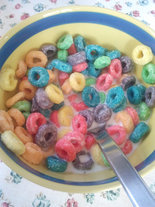 BBC News released an article yesterday focusing once again on SUGAR and the amount that kids across the country are consuming for breakfast. On average most children are eating 1/2 the recommended amount of sugar at the start of their day in their breakfast cereals and juices while others are eating over the recommended amount. Not only is this setting the stage for long term health issues including type 2 diabetes, obesity, cardiovascular disease, high cholesterol and cancer but it is also increasing the risk of children developing rotting teeth early in life. Here is an example of a typical breakfast kids may eat that would be considered healthy: 1 bowl of cheerios - 4.4g sugar 100ml of skimmed milk - 5g 250ml of freshly squeezed orange juice - 20g 1/2 small banana - 6g Amount of total sugar = 35g of sugar or just over 8 tsp. of granulated sugar This is the shocking truth hiding behind the food that we eat. This is why many parents are starting to find simple ways to reduce their intake of these harmful sugars by teaching their children how to read labels, to look for added sugar in the ingredients lists and keeping the cereals as special treats only bought on occasion. This is a great start but there is so much more we can do to fight this war on SUGAR. To start parents need to make healthy food choices for their kids and themselves when they are out shopping and focus on real food that is rich in protein, healthy fats, fibre, vitamins, minerals and other supportive compounds to promote growth, development, cognitive health, heart health and aid the weight loss struggles many of us face today. By removing products that contain added sugars and replacing them with healthier options we can begin supporting our long term health and the health of the next generation. So what should be our focus for a healthy breakfast? One that focuses on a healthy source of protein, fat, fibre, vitamins, minerals and other supportive compounds. We need to think about the food we eat as information for our bodies that allows us to thrive throughout the day. Here are some of my healthy and simple recipe ideas that all kids young and old will love. Three ingredient pancakes Makes 9-10 medium sized pancakes 3 large banana 6 organic or free range eggs 3 tsp. ground cinnamon 3 tbsp. ground flaxseed (linwoods brand found in all grocery stores) (great source of omega 3 fatty acids ideal for heart health & breain health as well as weight) Directions - Mash the banana in a bowl and whisk through the eggs and the cinnamon - Heat a pan over medium heat and cook for 4-5 minutes on each side - Serve with 1-2 tbsp. of natural bio live organic yogurt and 1/2 cup of blueberries - 1/2 tbsp. 100% maple syrup buy here These are simple and easy to prepare - they can be made in large batches, frozen and then taken out every morning for breakfast Note: You can also make these more like traditional pancakes by adding in 4 1/2 cups of plain oats ground into flour in a food processor or large blender, 1 1/2-2 cups of unsweetened almond milk/coconut milk or organic milk and 3 tsp. of baking powder (this will make 24-30 pancakes) Mix these ingredients with those above and cook the same 2-3 minutes on each side until you see bubbles forming. Serve with your natural bio live yogurt, berries and maple syrup (optional) Soaked Scrumptious Oats Serves 2 little ones 1/2 cup of plain oats 3/4 cup of unsweetened almond milk/coconut milk or organic milk 2 tbsp. ground flaxseeds 1 tbsp. ground sunflower seeds (or whole if you kids like nuts and seeds) 1 tbsp. ground almonds (or whole if your kids like nuts and seeds) 1 tsp. of ground cinnamon 1 tsp. of raw honey 1/2 organic apple grated (non organic apple peeled and grated) Directions - Mix all of the ingredients into a jar or bowl and combine until smooth - Place in the fridge overnight - In the morning losen with a bit more milk and top with optional 1 tbsp. bio live plain yogurt Savoury Breakfast If your kids enjoy eating eggs, omelettes, frittatas and vegetables then this would be an excellent start to the day providing them with a great source of protein, fibre, healthy fats, vitamins and minerals to help their body grow, repair, rejuvenate while also supporting optimal health. Fat doesn't make us Fat - Sugar does One of the leading doctors in the UK who is supporting the truth about FAT is Dr David Unwin who has evidence that cutting down on sugar, grains and carbs in all its forms and replacing it with healthy fats, proteins, nuts, seeds, vegetables and fruits lowers levels of diabetes and obesity. He was on Monday nights Food Unwrapped Episode which correlates nicely with this article by BBC on Sugar and our Childrens health. Written By: Debbie Vanderboom, Nutritional Advisor
2 Comments
With the start of another school year this means parents across the UK are beginning to think about simple, easy and convenient lunch box ideas for their children that will keep them healthy and energized. Some parents may struggle with this task and rely on packaged foods, snacks and sugary drinks that they know their kids will eat at school. But I am here to share with you some simple, easy and convenient healthy lunch box ideas that will not only keep your kids energized but will also help them stay motivated, focused and support long term health.
The key to creating healthy lunch boxes is to plan ahead for the week. When you go shopping make sure you have lots of healthy options for your kids to choose from and let them help pick out their favourite fruit and vegetable for the week. When making dinner cook a bit extra that you can use for the next day. Take 30 minutes over the weekend to prepare healthy muffins, your kids will love helping you mix the batter and lick the spoon. Or let them create their own healthy smoothie that they can enjoy as a snack. Here are some of my favourite lunch box ideas: 1) Rice Cakes with Hummus or Tzatziki served with chopped cucumber, courgettes, carrots, celery and chery tomatoes 2) Roast Chicken (from dinner) served with roasted parsnips and carrots & snap peas 3) Whole grain or lettuce wrap with organic cheese, lettuce, tomato, grated carrots, grated beetroot, avocado and a dijon honey mustard dressing 4) Tuna Nicoise Salad - mixed leaves, hard boiled egg, tuna, green beans, new potatoes, fresh lemon and olive oil (you could add olives and sundried tomatoes as well) 5) Sweet Corn Fritters with a greek salad 6) Vegetable Quiche or Frittata served with fresh fruit salad, natural yogurt and dark chocolate chips The key to creating a healthy lunch box that will maintain energy levels through the day is to include: At least 2 servings of vegetables (of course you can include more), 1-2 servings of fruit, 1 portion of healthy protein & fat, 1 serving of whole grains (optional) and water Focus on nutrient rich foods that grow from the ground as much as you can, and try to limit packaged foods with added sugars, chemicals and preservatives. We all know that kids love treats, so why not make them healthier and fun by baking some at home - please see below for a simple banana chocolate chip muffin recipe the whole family will enjoy Homemade Banana Chocolate Chip Muffins (gluten free, egg free) Serves 12 Ingredients 3 large bananas 160ml of water or coconut milk 65g of coconut oil or rice bran oil 2 tsp of vanilla extract (optional) 50g of maple syrup or 50g of coconut sugar or demerara sugar 140g of gluten free flour (doves farm) or 100g rice flour and 40g of potato flour 30g of ground almonds 50g of ground oats 25g of ground flaxseed 50-90g of dark chocolate chips (or chopped dark chocolate) Directions 1) Preheat the oven to 190C and line a muffin tray with 12 cups 2) Add the bananas to a bowl and mash until smooth, then add in the remaining wet ingredients. 3) Add all the dry ingredients to the bowl along with the dark chocolate and mix until combined. 4) Divide the mixture between the 12 cups and then bake in the oven for 20 minutes. Allow to cool and enjoy. These can be frozen and taken out for lunches through the week if they last that long you may have to double the recipe for extras. Please see my recipe page for the Sweet Corn Fritters 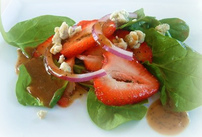 During the summer months we start to see some of our favourite seasonal vegetables and fruits at local farmers markets and on our grocery store shelves. All of these seasonal foods are great additions to any summer salad. When we start moving our thoughts away from a salad made of just lettuce, tomato and cucumbers which can leave us uninspired to salads topped with nuts, seeds, legumes, wholegrains, chia seeds, raw vegetables, olives, sundried tomatoes, strawberries, blueberries, watermelon, grapes and much more we can let our creativity run wild. The key to keeping things exciting is to swap and change your ingredients throughout the week and keep the focus on variety. Here are some great examples of healthy well balanced salads you can enjoy for lunch or dinner through the week. 1) Strawberry Spinach Salad: 2 cups of organic spinach, 1/2 cup of chopped fresh strawberries, 2 tbsp. of chopped walnuts, 4-6 sprigs of fresh basil, topped with balsamic & honey dressing (mix 3 tbsp. extra virgin olive oil, 1 tbsp. balsamic vinegar/white wine vinegar/apple cider vinegar, 1/2 tbsp. of raw honey or maple syrup, sea salt and pepper) Toss Dressing through the salad and enjoy. Why not add in: 1/4 cup of goats feta, 1/2 cup of chopped chicken breast, 1/2 cup of flaked wild salmon fillet or other fish of choice 2) Homemade Coleslaw: 1/2 small fennel sliced thinly, 1/2 apple chopped, 1/4 red cabbage grated or chopped finely, 1/4 white cabbage/pointed cabbage grated or chopped finely mix together then toss with a yogurt and dijon dressing (1/4-1/2 cup bio live greek yogurt, 2 tbsp. dijon mustard, 1/2 tbsp. maple syrup, 1/2 tbsp. apple cider vinegar, sea salt and black pepper - adjust to taste) Serve along side fresh rocket & watercress salad Why not add in: Chopped red peppers, grated carrots, pumpkin seeds, sunflower seeds 3) Healthy Greek Salad: 1/2 small cucumber chopped, 1/4-1/2 red onion chopped, 1/2 red pepper chopped, 1/4 cup of kalamata olives chopped, 1 chopped tomato, 1/2 cup of chickpeas or haricot beans with an oregano dressing (1 garlic crushed, 1 tsp dried oregano, 1/4 cup fresh lemon juice, 1/2 cup of extra virgin olive oil, sea salt and black pepper) Toss 2-3 tbsp. of dressing through your salad. 4) Chicken, Mango & Chili Salad: 1/2 chopped mango, 1/2-1 spring onion chopped, 1/2-1 red chili chopped, juice of one lime, 1/2-3/4 cups chopped chicken, small handful of chopped fresh coriander, chopped romaine lettuce or other lettuce of choice, 1 tbsp. extra virgin olive oil. Toss everything together and enjoy. 5) Orange, Avocado and Wild Rice Salad: 1/2 cup cooked wild rice (great to use from leftovers from dinner), 1/2 avocado chopped, 1/2 large orange chopped into pieces or slices, 1/4 cup chopped parsley, 2-3 tbsp. of toasted pecans, 1 tbsp. dried cranberries, 1 tbsp. chopped apricots Why not add in: Chopped Grilled Chicken, Chopped Grilled Turkey Breast, Flaked Mackerel Fillet, black eyed beans Happy & Healthy Eating! Debbie Vanderboom Nutritional Advisor The Green Smoothie Challenge is now into week 2 and we have been mixing up delicious green based smoothies to pack more greens into our routine. So far we have enjoyed spinach, rocket, avocado, carrots, beetroot, coriander, basil, parsley, coconut, flaxseed, chia seeds and a variety of antioxidant rich fruits.
Why green smoothies? Because we are just not eating enough vegetables daily and more importantly raw 'live' vegetables. When we eat raw vegetables we are providing our body with live enzymes that help our cells function at an optimal level for health and aid in the digestion of our food to the smallest molecules that get absorbed into our blood stream and used for cellular energy. Combining 'live' raw foods with lightly cooked foods through the day gives our body the highest sources of vital nutrients it needs to thrive and survive. Now what about all those powders and potions that are being added to smoothies these days? Is there any health benefit by adding them to our green smoothies? The answer is YES! There are many amazing 'superfood' powders that can be added to your smoothies that all offer their own health benefits, but the one I wanted to look more closely at is a Greens Powder. Since we are trying to get more greens into our routine, it may be worth looking a a greens powder that you can add into your daily blend that combines wheatgrass, spirulina, barley grass and chlorella. Here are the health benefits of each. Wheatgrass: Provides you with all the vitamins & minerals you need daily allowing the body to preform at its highest levels. It contains high amounts of Vitamin E, Calcium, Iron, Zinc, Copper, Fibre & Protein. Helps to keep your skin glowing, your hair shining and your energy soaring. Spirulina: A blue green algae that is known for its high levels of plant based protein. It is also an excellent source of B Vitamins, Calcium, Magnesium & Iron. It provides high levels of antioxidants that help protect our cells from damage and also has anti-inflammatory properties. Chlorella: Another blue green algae that is rich in phytonutrients, including amino acids, chlorophyll, beta carotene, potassium, phosphorus, biotin, magnesium and B Vitamins. It is shown to detoxify the body from heavy metals, supports the immune system, promotes weight loss, helps you look younger, fights cancer, lowers blood sugar & cholesterol. Barley Grass: A concentrated source of over 3 dozen nutrients particularly Vitamin A, C, B1, B2, Folic Acid, B12, Calcium, Iron, Potassium and chlorophyll. You can now see why having a greens powder every day has been part of my daily routine. There are various brands available in health foods shops or online, however buying an organic source is essential. It will ensure there is no contamination which can occur if appropriate standards are not met for these delicate super greens. Happy Blending, Debbie Vanderboom Nutritional Advisor 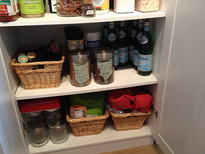 We all know that nourishing our bodies with whole foods is the answer to all of our health concerns, illnesses and disease. However, with a lot of the mixed messages that are circulating in the media and news it can become very confusing to really understand and know what makes up the foundations of optimal health. When I meet with my clients for their initial consultation this is what I see time and time again. They are confused about which foods they should be eating for optimal health and which foods may be resulting in their health concerns. They have been misinformed for years which may explain their low energy, weight gain, hormonal issues, PMS, digestive complaints and much more. So I thought I would provide you with some helpful tips to get you started on the road to improved health. It all starts in your shopping cart, it is here that our health choices are made and where you can choose to support your health, or support disease. We want to make sure that what we are bringing into our house to be used in recipes or as snacks or desserts are going to feed our cells and allow our body to thrive and survive. Here are Simple Foods that you should always have in your pantry/fridge to support optimal health and wellbeing: Fresh Vegetables: These are the powerhouses/superfoods of nature and we are just not eating enough of these on a daily basis. Focus on those that are seasonal and local which will boost nutrient content, also organic where possible (see previous post on Clean 15 & Dirty Dozen). The best to include are: Kale, Swiss Chard, Spinach, Spring Greens, Broccoli, Asparagus (now in season), Cauliflower, Green Beans, Rocket, Mixed Leaves, Watercress, Cucumber, Peppers, Celery, Sweet Potatoes, Squash, Beets, Onions, Leeks, any other UK varieties Fresh Fruits: These are packed with antioxidants and other important vitamins & minerals that help support our health. Although they have many health benefits they should not be eaten in excess as they are still high in natural sugars. Enjoy them 1-2 times per day. The best to include are: Blueberries, Raspberries, Strawberries, other varieties of berries, green apples, pears, kiwi, oranges, lemons and limes. Healthy Fats: Avocadoes, Coconuts, Coconut Oil, Olives, Cold Pressed Extra Virgin Olive Oil, Hemp Seed Oil, Avocado Oil, Walnut Oil (all cold pressed), Nuts, Seeds, Nut/Seed Butters, Ghee, Grass Fed Butter, Wild Fish Animal Protein: Pasture Raised Chicken, Turkey, Eggs, Wild Fish, Nitrate Free Bacon, Grass Fed Beef/Lamb in moderation (once per week) Herbs/Spices: These are great for adding into various recipes. Basil, Coriander, Parsley, Mint, Dill, Chives, Thyme, Rosemary, Oregano, Chillies, Garlic, Ginger, Turmeric, Himalayan Salt, Black Pepper, Cayenne, Paprika, Cinnamon, Nutmeg, All Spice any others you enjoy cooking with. Wholegrains: When it comes to wholegrains there is still alot of confusion, we want to focus on the grain that grows from the plant and hasn't been processed/milled or changed into something else. The best to include are: Quinoa, Buckwheat, Millet, Wild Rice, Organic Oats, Amaranth. Frozen: Organic frozen vegetables, frozen berries, extra protein like wild fish and chicken Sauces/Spreads: This is where our fridge and pantry can get cluttered and filled with foods packed with added sugars, additives, preservatives and chemicals that do not support optimal health. Instead focus on healthier choices. The best to include are: Dijon Mustard, Tamari (GF), Tahini, Coconut Aminos, Balsamic Vinegar, Raw Apple Cider Vinegar, Hot Sauce like Srirancha, miso, kimchi, fermented vegetables Healthy Snacks: We all like to have snacks on hand for those moment when we need a little boost in energy, but this is where a lot of us fail when it comes to optimal health. The best to include are: Nuts, Seeds, Nut/Seed Butters, Avocadoes, Naked Bars, Primal Bars any other raw food bar that only has dried fruits and nuts/seeds in it, coconut, 70% or higher dark chocolate, hard boiled eggs, vegetables, homemade hummus. The one thing I tell all my clients is: 'If it grows from the ground or eats what grows from the ground then enjoy eating it, if it is made in a factory by someone in a lab coat then put it back on the shelf' Debbie Vanderboom, Nutrition Advisor To book an initial consultation and work with me on a nutrition plan that is right for you and your needs please do get in touch. Special Summer Package Now Available. 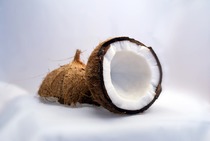 There are a variety of essential fats that our bodies need in order to protect our cell membranes, allow us to absorb fat soluble vitamins, are needed for hormone, brain health, heart health and much more. Some of these fats can be created in our body, while others we need to provide through the food that we eat. Some of the best sources of healthy fats to include daily are listed below. Although these foods do contain higher amounts of calories, they are calories from nutrient dense, vitamin and mineral rich plant sources that our bodies use for optimal health and wellbeing. Here are some of the best sources: Coconut Oil - Best to cook with and raw (high heat stability) contains medium chain triglycerides that have been shown to boost metabolism and burn fat. Avocadoes - Contain mono unsaturated fats that help lower cholesterol, reduce belly fat, and curb those unwanted cravings. Great on it's own, in smoothies, juices or dressings. Nuts & Seeds and their oils - Provide protein along with omega 3 & Omega 6 fat great for those times when you need a boost of energy that packs a punch. Oily Fish - An excellent source of omega 3 fatty acids (which are anti-inflammatory in the body and have been linked to improving brain function and brain development in babies) also help boost metabolism, fat burning and suppress appetite. Olive Oil/Olives - Live like the Italians and drizzle 1 tbsp. per day of olive oil on soups, veggies, in dressings, marinades or salads (not stable to cook with) great for the heart Try to include one of these each day to help boost your overall health and wellness. There are many foods that help boost our brain energy and improve our overall health. Here are some of the top 5 foods I feel are essential to a happy brain.
 There is so much information out there discussing the importance of post workout snacks and meals but are you giving your body what it really needs to rebuild and repair after an intense workout? Eating a balanced meal or snack 1-2 hours after a workout has been shown to be a good recovery timeframe to consider. Here are 10 nourishing suggestions you may want to give a try: 1. Handful of Nuts with a Banana 2. Primal or Nakd Raw food Bar or homemade energy bites 3. Apple with 1 tbsp. almond butter 4. 250ml of green smoothie 5. 1/2 cup of organic natural yogurt, 1/2 cup of blueberries, 1/8 cup of walnuts/pumpkin seeds 6. Grilled Chicken with Roasted Root Vegetables and Steamed Kale 7. Courgette Noodle Pasta with Chickpea Meatballs and Tomato Sauce 8. Wild Salmon Fishcakes Steamed Greens and 1/2 sweet potato 9. 1/4 cup of homemade nutty granola with 1/2 cup organic kefir yogurt & pear 10. 1/2 cup of soaked oats with carrot, cinnamon, nutmeg and topped with 2 tbsp. seeds Optimal health = 80% nourishing foods & 20% exercise. Happy Exercising! Over the past 3-4 months I have been searching for various recipes which are grain free and delicious of course. I must admit some that I have tried, or altered have been complete disasters (we have to start somewhere right?), while others have been a huge success. This recipe which I whiped up last night for dinner was adapted from Oh She Glows, a wonderful blog for anyone who is leading a vegan lifestyle. Angela Liddon combines a variety of nourishing foods to really give the body what it needs to thrive. Although I do still eat 100% grass fed meat, organic poultry, eggs and fish, most of my meals are made up of at least 50-75% vegetables, nuts, seeds, quinoa, minimal fruits and occassionally brown rice, buckwheat and GF Oats. I believe that beginning a new eating plan, whether by choice or because of health reasons, should be enjoyable and fun. Take this opportunity to try things you may not have thought of, or combinations that may not be the norm. You may be surprised what you are really capable of. Here is my adapted Grain Free Quiche Recipe (Gluten Free): Base Ingredients:
1 cup ground almonds 1 cup ground GF Oats ( I just used my spice/coffee grinder for this) 1 tsp of mixed herbs pinch himalayan salt 1 tbsp ground flaxseed + 3 tbsp warm water 1 tbsp olive oil 1-2.5 tbsp water Filling Ingredients: 6 eggs 1/4 cup frozen organic peas 1/4 cup frozen organic corn 4 diced sundried tomatoes (soaked in water from dry) 1/4 cup of grated organic mature cheddar fresh basil Directions 1) Heat oven to 175C and grease a 20" tart tin with olive oil/coconut oil 2) Mix the flax with the water and let sit for 5 minutes until thick 3) Mix all the dry ingredients, then add the oil & flax egg, then slowly add in water and mix to combine until a crumble forms and it sticks together when pressed between your fingers 4) Line the tin with the mixture and push up around the edges 5) Bake 13-17 minutes until browned slightly (may vary depending on oven) 6) Meanwhile mix the 6 eggs in a large bowl, and add in the vegetables (can add in anything here really I would have added kale, peppers, courgette but I was using what I had) 7) Add grated cheese, tomatoes and cheddar and mix to combine 8) Take the base out of oven and top with the egg mixture 9) Turn up the temperature to 190C and then bake the quiche for 25-30 minutes or until cooked through Serve with a large mixed leaf salad with any vegetables you would like. Enjoy. Serves 4-6 people. |
AuthorDebbie Vanderboom is a Nutritional Advisor, Natural Juice Therapist and foodie who loves using fresh, wholesome food to nourish the body. Educating her clients on the importance of choosing healthy foods on a daily basis is her focus. She provides her clients with recipes, resources and meal plans to help develop healthy eating habits for life. Archives
May 2023
Categories |
|
Be Natural Nutrition
Consultations will be held online via zoom or skype |
Proudly powered by Weebly
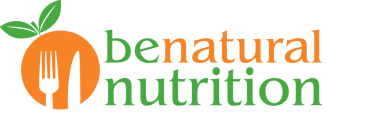
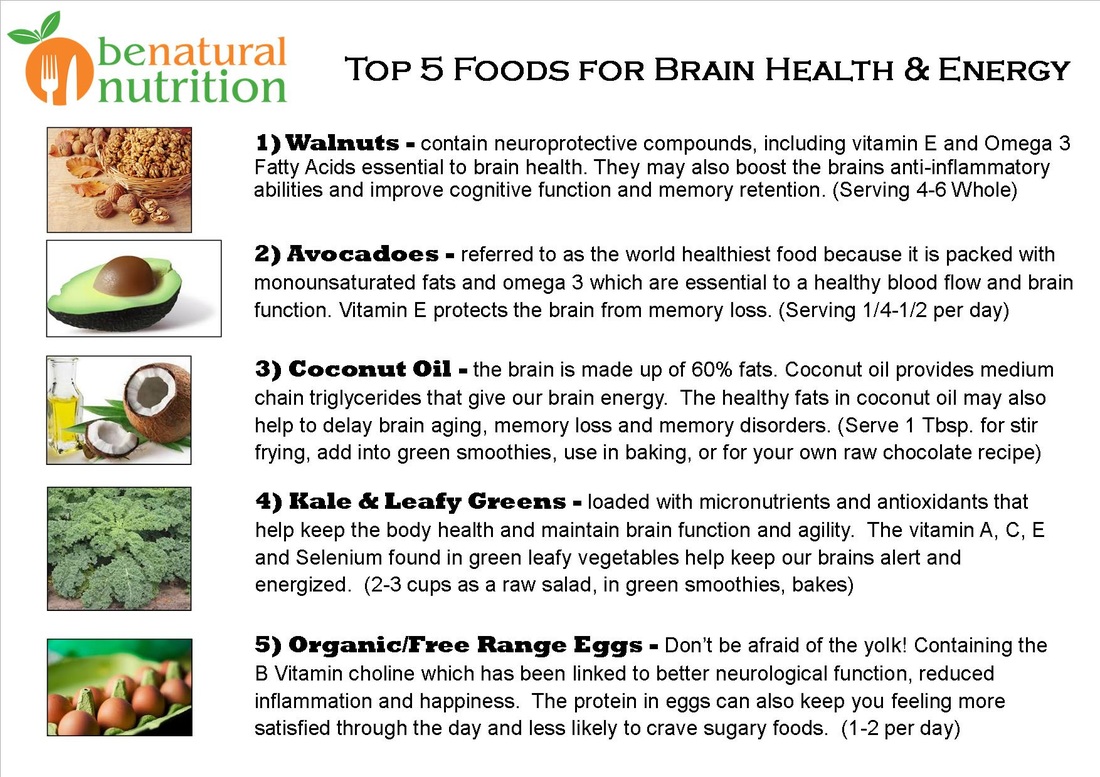
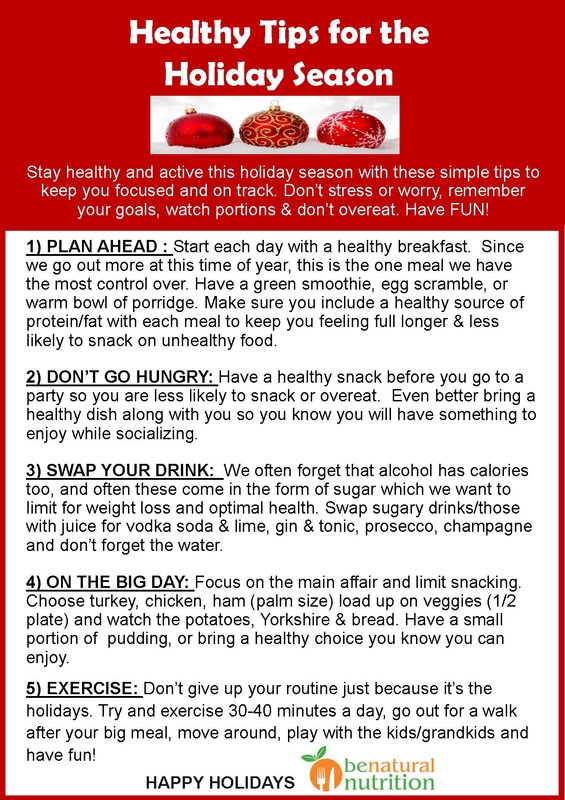
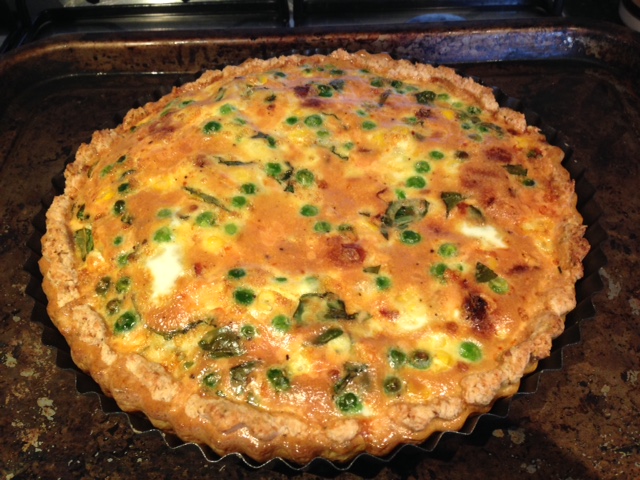
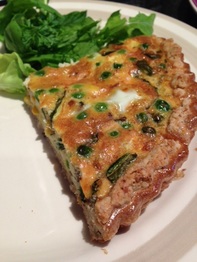

 RSS Feed
RSS Feed